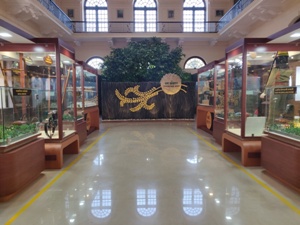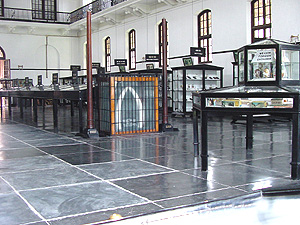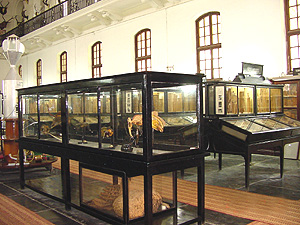Forest Research Institute Dehradun |
||
Silviculture Museum |
||
|
||
Timber Museum |
||
|
||
Non Wood Forest Products Museum |
||
|
||
Social Forestry Museum |
||
|
This museum depicts the effect of environment with and without trees on productivity and economy of the villages. Photographs and Models show effect of tree growth on fuelwood, fodder and other forest products. Models show the nursery techniques for raising planting stocks, planting techniques and various protective measures for the plants. Models of improved smokeless chulhas to demonstrate the efficient use of fuelwood. |
||
Pathology Museum |
||
|
Forest Pathology museum houses 900 exhibits of various economically important tree diseases and timber decays. Exhibits are arranged on the basis of two broad host groups: hardwood and conifers. These are further divided according to the part of the plant affected namely root disease, stem disease and foliage disease. Important tree diseases such as heart-rot in khair, sal, teak and deodar and root-rot in khair, sal and pines have been displayed. Degradation of timber and timber products caused by micro- organisms are also displayed. |
||
Entomology Museum |
||
|
| Tropical Forest Research Institute Jabalpur |
Forest Interpretation centre-cum-Museu |
|
The Forest Interpretation Centre and Museum of TFRI is open to public for generating awareness on tropical forests. The displays are arranged in user friendly manner to make the subject more understandable, meaningful and interesting to all the visitors. This unit displays on the aspects relevant to forestry and environment, viz. geographical distribution of tropical forests, flora and fauna and their diversity, utilization of forest resources by human being, several other aspects related to tropical forestry. It also displays a few scientific instruments used in forestry research and their working principles. It also displays a unique world collection of postage stamps on forests. There has been a very good foot-fall (more than 4000) since its inception in Nov., 2014, comprising of different groups of visitors from school children to the learned dignitaries |
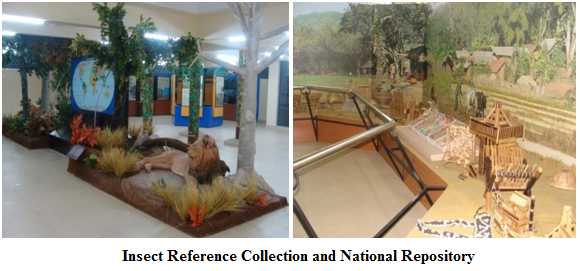 |
|
The Institute has an Insect Reference Collection of more than 700 identified insect specimens occurring in central India. This Insect Reference Collection maintained by Forest Entomology Division is a National Insect Repositorydeclaredby the National Biodiversity Authority (MoEF&CC, Govt. of India), particularly for the insect orders: Lepidoptera and Termites. The repository is the largest collection of identified insects in the region with identification services available for the researchers facilitating the insect management and assessment of biodiversity. |
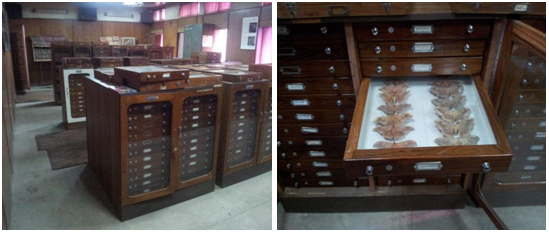 |
|
Mycology Herbarium |
|
A mycology herbarium of forest fungi exists at the institute with over 3500 specimens systematically arranged in herbarium cabinets. An identification service for forest fungi is available from the institute. |
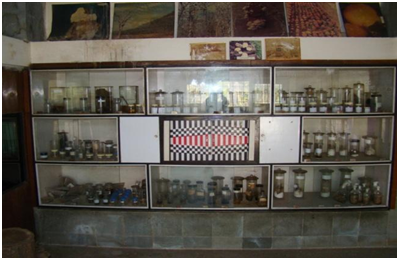 |
|
Archnarium |
|
TFRI has recently raised an "Arachnarium" for the first time in India, in the form of three indoor and outdoor components (laboratory, interpretation centre and spider garden for in situ demonstration), where spiders are not only reared in laboratory conditions, maintaining a natural environment but also a unique place for display so that the role of spiders as component in the environment is displayed. Apart from preserved spider specimens collected from all over India in the Arachnarium, there would be exhibits of live spiders. To begin with, 50 species of spiders have been included in the Arachnarium. Some extraordinary spiders, like the fish eating Pisaurids and bird eating giant wood spider would get prime focus. |
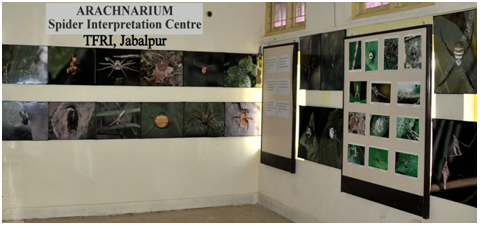 |
| Arid Forest Research Institute Jodhpur |
Interpretation Center |
|
Arid Forest Research Institute, Jodhpur is extending its research reach out by extending research output to stake holders through Division of Agroforestry and Extension. It has carried out extension works through multifarious approaches encompassing organization of educational/eco-sensitization/ capacity building/technology transfer training programmes; collaborative forestry research extension programmes; exhibits display of activities; publications of extension bulletins/ handouts, brouchures, leaflets, pamphlets and paper presentations / publications in print media. There is a well equiped Extension & Interpretation Centre under Agroforestry and Extension Division, AFRI to show case our research findings to the end users. |
 |
| Himalayan Forest Research Institute Shimla |
|
The institute had established a small museums (Interpretation Centre) in the basement of M.D. Chaturvedi Multi-purpose Training Complex of the institute, which was inaugurated by the Director General, ICFRE, Dehradun during November, 2015. Efforts have been made to showcase the various research and extension activities carried out by the institute in the past. |
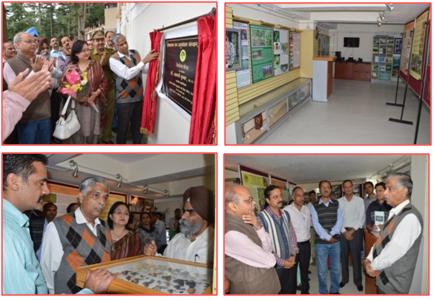 |
| Institute of Forest Genetics and Tree Breeding, Coimbatore |
Gass Forest Museum |
|
The Gass Forest Museum, one of the oldest in Asia, initially started as a Forest Museum at Madras by J.S. Gamble, the then Conservator of Forests, Madras state towards the end of 19th century. Later the present museum was initiated in 1902 by Mr Horace Archibald Gass, the then Conservator of Forests, Coimbatore circle in the Conservator’s office building. The museum grew up occupying the office rooms of the District Forest Officers (North & South), Coimbatore and the erstwhile Government subsequently sanctioned the construction of a building on 24th March 1905 and appointment of Curator on 01st April 1905. The construction of new building commenced in April 1905 and completed in 1906 at a total cost of Rs. 8,860/- . The new museum building was opened by Sir Arthur Lawley on 05th September 1906. “In recognition of the fact that the establishment of the Forest Museum at Coimbatore was due to the personal initiative of Mr. H. A. Gass and that its present successful development is due to the energetic interest which he has taken in it, during the tenure of his office as Conservator of Forests in the Southern circle, His Excellency the Governor in council is pleased to direct that the Museum be hereafter known as “The Gass Forest Museum”. Restoration |
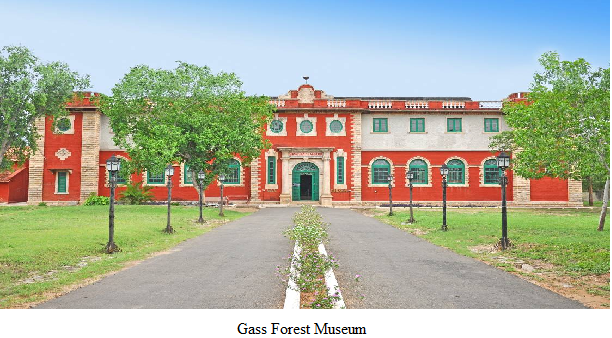 |
| Advanced Research Centre for Bamboo and Rattan, Aizawl |
|
A Bamboo and rattan museum was established in the year 2013 and thereafter, samples are gradually added in its collection. It has a collection of preserved samples of 23 bamboo species and 04 rattan species. A feature of special attraction of the museum is its collection of preserved flowering twigs of different bamboo species such as Dendrocalamus longispathus, Dendrocalamus hamiltonii, Dendrocalamus strictus, Bambusa mizorameana etc. Value added bamboo products such as Bamboo charcoal briquettes and bamboo vinegar is also displayed. Participants of all the trainings and meeting always visit the museum. . |
 |




